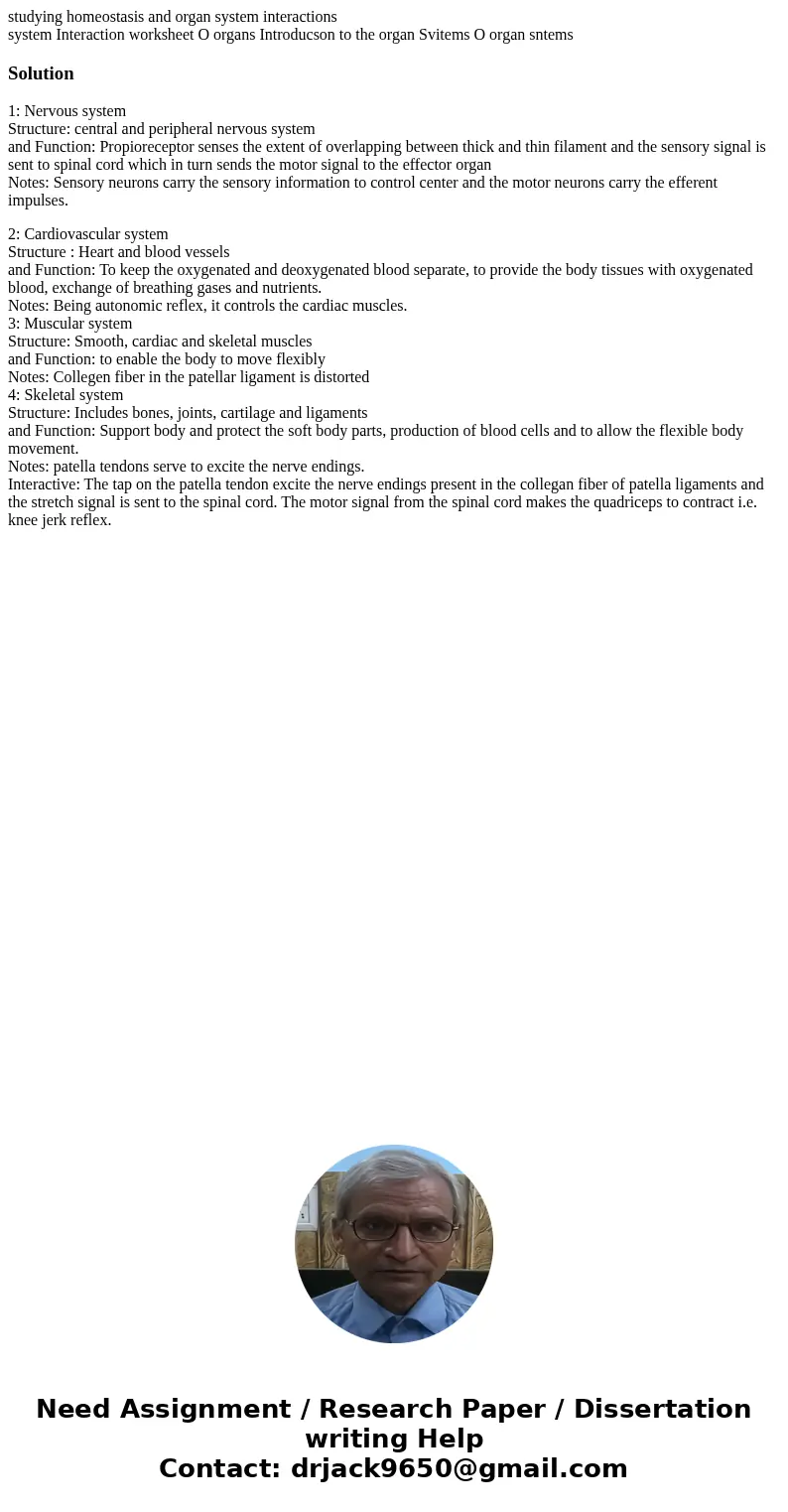studying homeostasis and organ system interactions system In
Solution
1: Nervous system
Structure: central and peripheral nervous system
and Function: Propioreceptor senses the extent of overlapping between thick and thin filament and the sensory signal is sent to spinal cord which in turn sends the motor signal to the effector organ
Notes: Sensory neurons carry the sensory information to control center and the motor neurons carry the efferent impulses.
2: Cardiovascular system
Structure : Heart and blood vessels
and Function: To keep the oxygenated and deoxygenated blood separate, to provide the body tissues with oxygenated blood, exchange of breathing gases and nutrients.
Notes: Being autonomic reflex, it controls the cardiac muscles.
3: Muscular system
Structure: Smooth, cardiac and skeletal muscles
and Function: to enable the body to move flexibly
Notes: Collegen fiber in the patellar ligament is distorted
4: Skeletal system
Structure: Includes bones, joints, cartilage and ligaments
and Function: Support body and protect the soft body parts, production of blood cells and to allow the flexible body movement.
Notes: patella tendons serve to excite the nerve endings.
Interactive: The tap on the patella tendon excite the nerve endings present in the collegan fiber of patella ligaments and the stretch signal is sent to the spinal cord. The motor signal from the spinal cord makes the quadriceps to contract i.e. knee jerk reflex.

 Homework Sourse
Homework Sourse